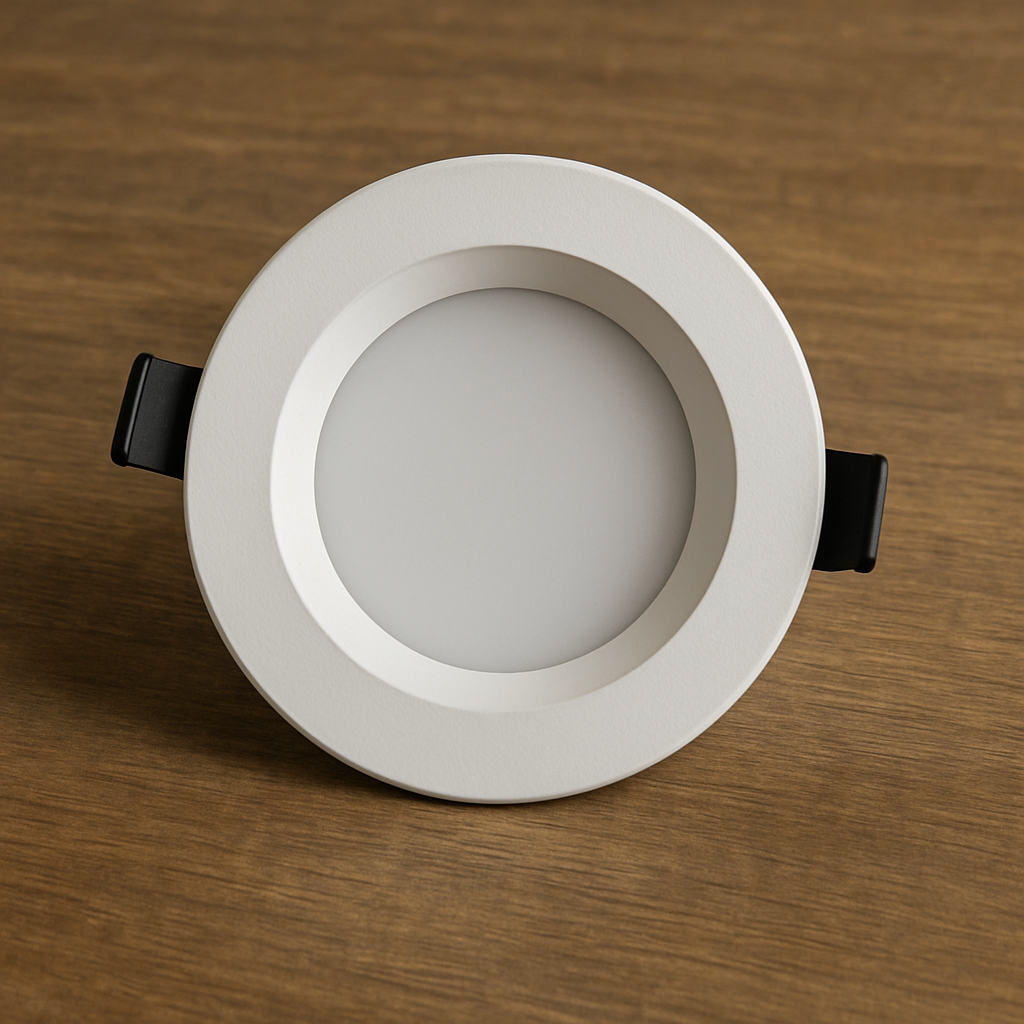Do LED Recessed Lights Really Last 50,000 Hours? A Reality Check
Discover the true lifespan of LED recessed lights. Learn how factors like heat, installation, and maintenance impact their longevity, beyond the 50,000-hour claim.

In the world of lighting, LED technology has revolutionized how we illuminate our spaces. Among the various types of LED lights, LED recessed lights have become a popular choice for homeowners and businesses alike. They promise energy efficiency, a sleek design, and most appealingly, a lifespan that seems almost too good to be true50,000 hours. But do LED recessed lighting really last that long? Let's take a closer look.
When manufacturers claim that LED recessed lights last 50,000 hours, they are referring to the time it takes for the light to lose about 70% of its initial brightness. This is known as the L70 rating. In simpler terms, it doesn't mean the light will burn out after 50,000 hours, but rather that it will become noticeably dimmer.
To break it down, the L70 rating is a standard measure in the lighting industry, indicating the point at which the light output falls to 70% of its original capacity. This gradual dimming process means the light will still function beyond this point, albeit at reduced efficiency. Its a benchmark for consumers to understand the longevity and performance of their lighting investment.
If you use an LED light for about 5 hours a day, it could take nearly 27 years to reach 50,000 hours. This long lifespan is one of the primary selling points for LED lights, but it's important to know that this is an estimate and real-world conditions can affect longevity. The 50,000-hour claim assumes optimal conditions, which might not always be the case in everyday settings.
Several factors can influence whether your LED recessed lights will reach or exceed their expected lifespan. Understanding these can help you make informed decisions and maximize the life of your lighting.
LEDs are sensitive to heat. Excessive heat can reduce their lifespan significantly. Proper installation and adequate ventilation are crucial to prevent overheating. The design of the fixture plays a vital role in ensuring heat is dissipated effectively, with heat sinks being a critical component.
Poor heat management can lead to thermal stress, causing the LED chips to degrade faster. It's essential to ensure that recessed lights are installed in a way that allows for sufficient airflow, preventing heat accumulation. Regularly checking the temperature around the fixtures can also help in maintaining optimal performance.
Not all LEDs are created equal. The quality of the diode, the driver, and the heat sink play a critical role in the longevity of the light. High-quality components are typically more resilient and can better withstand environmental stresses.
Investing in reputable brands that use superior materials can make a significant difference. The driver, which regulates the power supply, should be robust enough to handle voltage fluctuations. Similarly, a well-designed heat sink can effectively manage thermal output, ensuring the LED operates within safe temperature ranges.
Frequent on-off cycles can also affect the lifespan. While LEDs are more resilient to this than traditional bulbs, constant switching can still reduce their longevity over time. It's advisable to use LEDs in areas where they will remain on for extended periods rather than frequently toggling them.
Understanding your lighting needs and adjusting usage patterns accordingly can help extend the life of your LEDs. For instance, in areas with high foot traffic, consider using motion sensors to minimize unnecessary on-off cycles. This approach not only conserves energy but also protects the integrity of the LED components.
Humidity, dust, and other environmental factors can also impact performance and longevity. LEDs are generally robust, but exposure to adverse conditions can accelerate degradation. Ensuring the lights are installed in suitable environments is crucial.
Regular cleaning and maintenance can help mitigate these effects. Dust accumulation can lead to overheating, while high humidity can cause corrosion. Protective coverings and periodic inspections can help maintain optimal conditions, prolonging the lifespan of your LED recessed lights.
Even if LED recessed lights don't last the full 50,000 hours under all conditions, they offer a range of benefits that make them a worthwhile investment. Understanding these advantages can help justify the initial investment and highlight the value LEDs bring to modern lighting solutions.
LEDs are known for their energy efficiency. They consume significantly less power compared to traditional incandescent bulbs. This means lower electricity bills and a reduced carbon footprint, which is beneficial both economically and environmentally. The energy savings can be substantial over time, often offsetting the higher upfront cost of LEDs.
Additionally, LEDs convert a higher percentage of electricity into light rather than heat, making them more efficient. This efficiency translates to longer-lasting performance and reduced demand on power resources. By choosing LED recessed lights, you're contributing to a more sustainable future, where energy consumption is minimized without compromising on lighting quality.
LED recessed lights come in various sizes and designs, allowing for greater flexibility in lighting design. They can be used to create ambient lighting, accent lighting, or task lighting, depending on your needs. This versatility makes them suitable for a wide range of settings, from residential spaces to commercial environments.
With advancements in technology, LEDs now offer a variety of color temperatures and beam angles, enabling precise control over lighting ambiance and focus. Whether you're looking to highlight artwork, illuminate a workspace, or set a cozy atmosphere, LED recessed lights provide the adaptability you need. Their sleek, unobtrusive design also complements modern architectural aesthetics, making them a favorite among designers and architects.
LEDs are more durable than traditional light bulbs. They are less likely to break since they do not have a filament. Furthermore, they emit very little heat, reducing the risk of fire hazards and making them safer for use in homes and businesses. This durability means fewer replacements and lower maintenance costs.
The solid-state construction of LEDs makes them resistant to shock and vibration, ideal for environments where traditional bulbs might fail. Their low operating temperature further enhances safety, particularly in areas where overheating could pose a risk. By choosing LEDs, you're investing in a lighting solution that's not only efficient and versatile but also robust and secure.
Despite their benefits, several misconceptions about LED lighting persist. Addressing these can help consumers make informed decisions and fully appreciate the value of LED technology.
It's true that the upfront cost of LED recessed lights can be higher than traditional lighting options. However, the long-term savings on energy costs and the reduced need for replacements make LEDs a cost-effective choice in the long run. The initial investment is often recouped through lower utility bills and less frequent purchases of replacement bulbs.
Additionally, as LED technology continues to advance, the cost of manufacturing has decreased, making LEDs more accessible to a broader audience. Governments and organizations worldwide also offer incentives and rebates for energy-efficient upgrades, further offsetting the initial cost. When viewed from a long-term perspective, LEDs present a financially sound choice.
LED technology has advanced significantly, offering a range of color temperatures from warm to cool. This allows you to choose a lighting option that suits the ambiance of your space. Modern LEDs are capable of producing light that's comparable in quality to traditional incandescent bulbs, without the harshness often associated with early LED models.
The ability to customize color temperature and intensity ensures that LEDs can mimic natural light or create specific moods as desired. Whether you prefer the warm glow of an evening setting or the crisp brightness of daylight, LEDs provide the flexibility to tailor lighting to your preference. This adaptability dispels the myth that LEDs are inherently harsh or uninviting.
Another misconception is that LEDs cannot provide sufficient brightness. However, modern LEDs are available in high-lumen outputs, providing ample lighting for any space. The myth of inadequate brightness stems from early LED models, but advancements in technology have significantly improved light output.
Today, LEDs can match or exceed the brightness of traditional incandescent and fluorescent bulbs, making them suitable for a variety of applications, from general illumination to specialized tasks. Understanding lumens and choosing the appropriate fixtures for your needs ensures that LEDs can deliver the desired level of brightness, dispelling concerns about insufficient lighting.
To ensure that you get the most out of your LED recessed lights, consider the following tips. Proactive measures can significantly enhance the performance and longevity of your lighting investment.
Ensure that your LED recessed lights are installed correctly, with adequate space for heat dissipation. This will help prevent overheating and extend the lifespan of your lights. Consulting with a professional installer can ensure that the setup complies with manufacturer guidelines and industry standards.
Proper installation involves more than just placing the lights in the ceiling. It includes assessing the surrounding environment to ensure optimal airflow and temperature regulation. Following installation instructions meticulously can prevent common pitfalls that may compromise LED performance.
Invest in high-quality LED products from reputable manufacturers. While they may be more expensive upfront, they are more likely to perform better and last longer. Look for certifications and ratings that indicate compliance with industry standards, ensuring you're purchasing a reliable product.
Researching and reading reviews can provide insight into the performance and durability of different LED brands. Opting for well-known manufacturers with a history of quality and innovation can save you from potential disappointments and ensure you enjoy the full benefits of LED technology.
Keep your LED lights clean and free from dust and debris. This will help maintain their efficiency and prolong their lifespan. Regular maintenance includes checking for signs of wear or damage, ensuring connections are secure, and addressing any issues promptly.
Dust and dirt can obstruct light output and contribute to overheating, so periodic cleaning is essential. Using a soft cloth or compressed air to clean fixtures can prevent buildup. Additionally, regular inspections can identify potential problems early, allowing for timely interventions that preserve the integrity and performance of your LED lights.
While the 50,000-hour lifespan of LED recessed lights may not always be achievable due to various factors, they remain a reliable and efficient lighting option. Their energy efficiency, design flexibility, and durability make them an excellent choice for modern lighting needs. By understanding the factors that affect their lifespan and taking steps to maximize it, you can enjoy the benefits of LED recessed lights for many years to come.
In summary, while the promise of 50,000 hours is an attractive marketing claim, real-world conditions often dictate the true lifespan. However, with proper care and maintenance, your LED recessed lights can provide long-lasting illumination, making them a smart investment for any home or business. By embracing LED technology and implementing best practices, you can enhance your lighting environment, achieve significant cost savings, and contribute to a more sustainable future. For those looking for quality LED products, BestLEDz stands out as a reputable commercial and decorative lighting distributor, offering a range of options to meet various lighting needs.






































